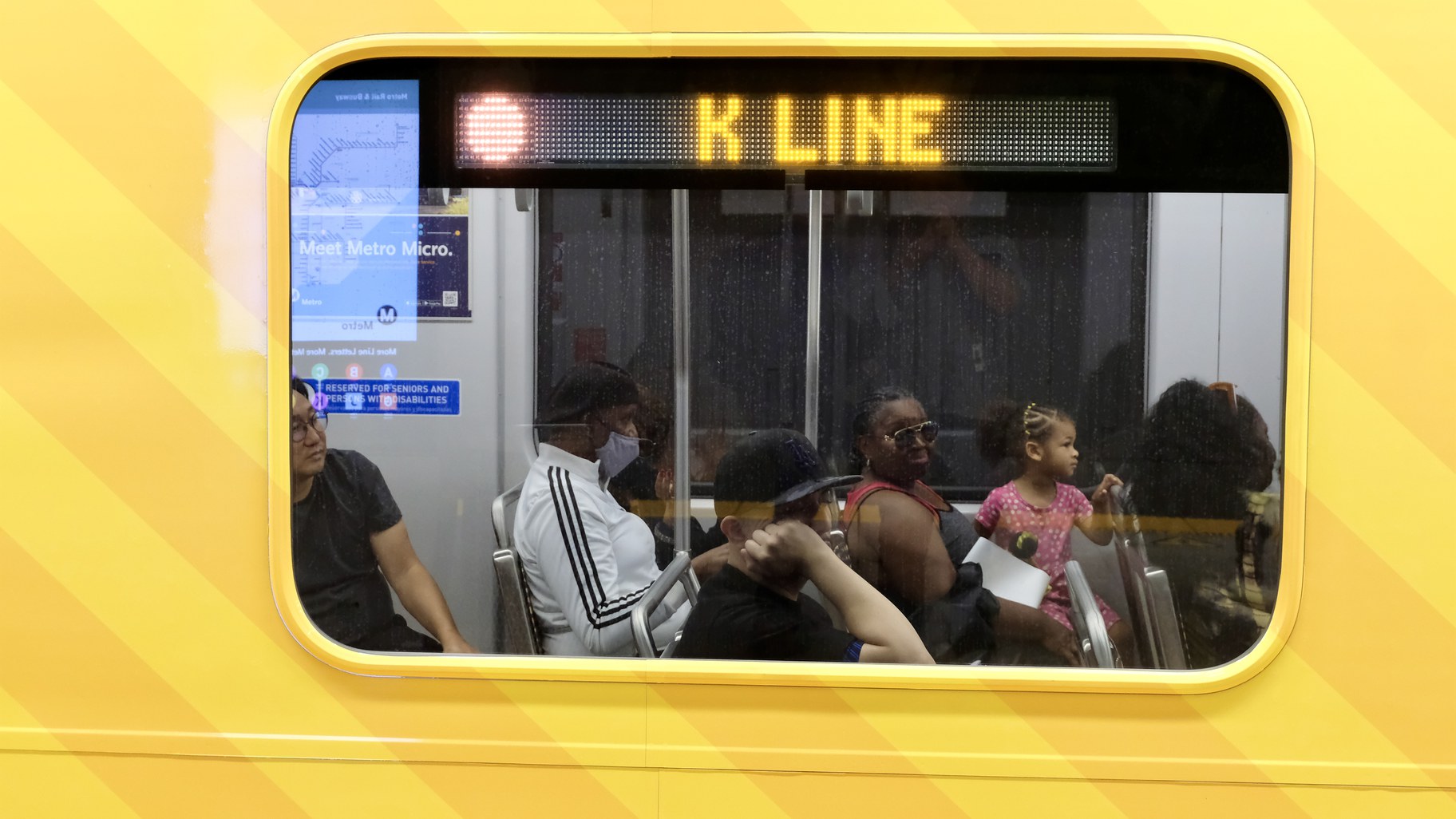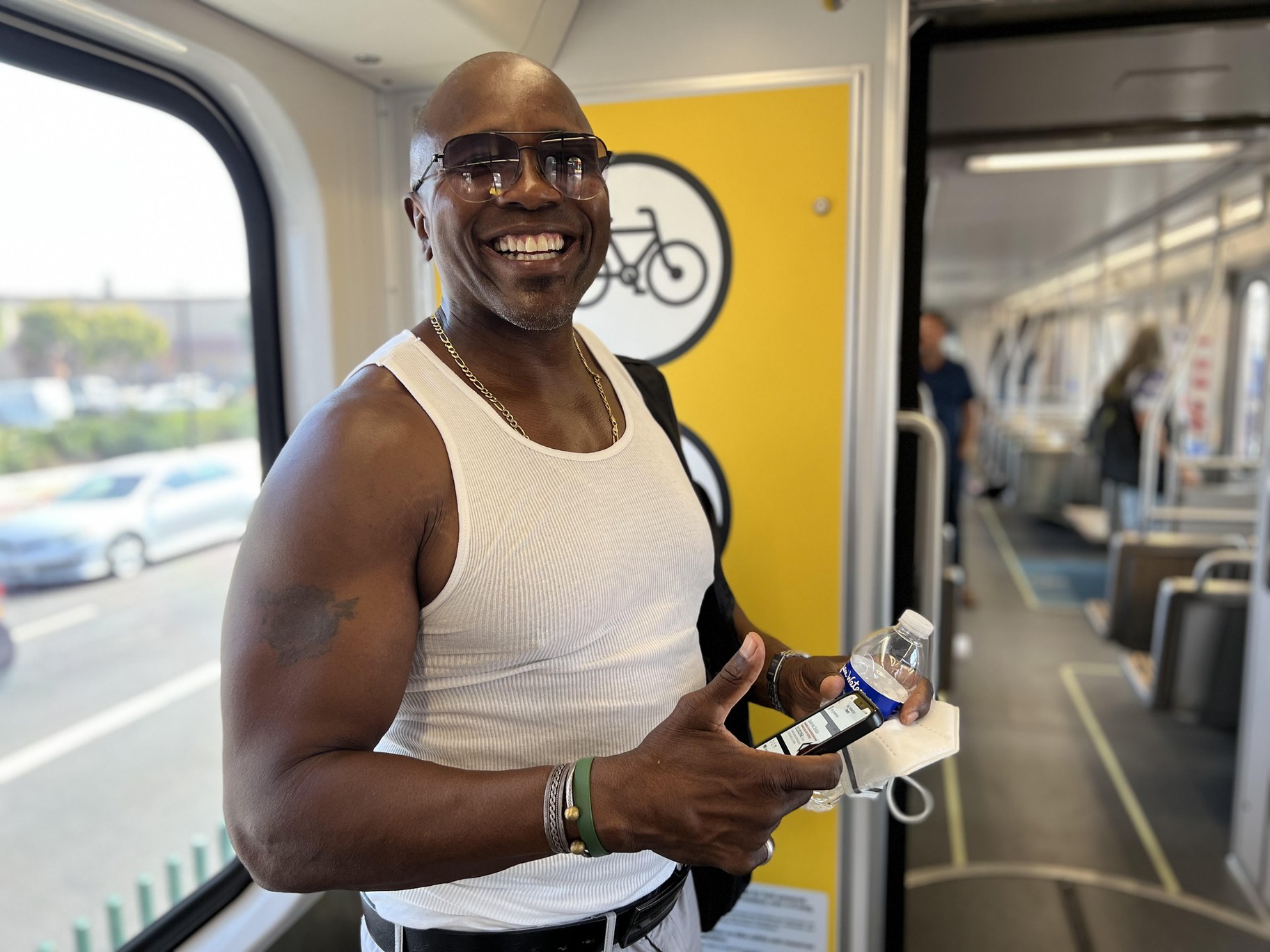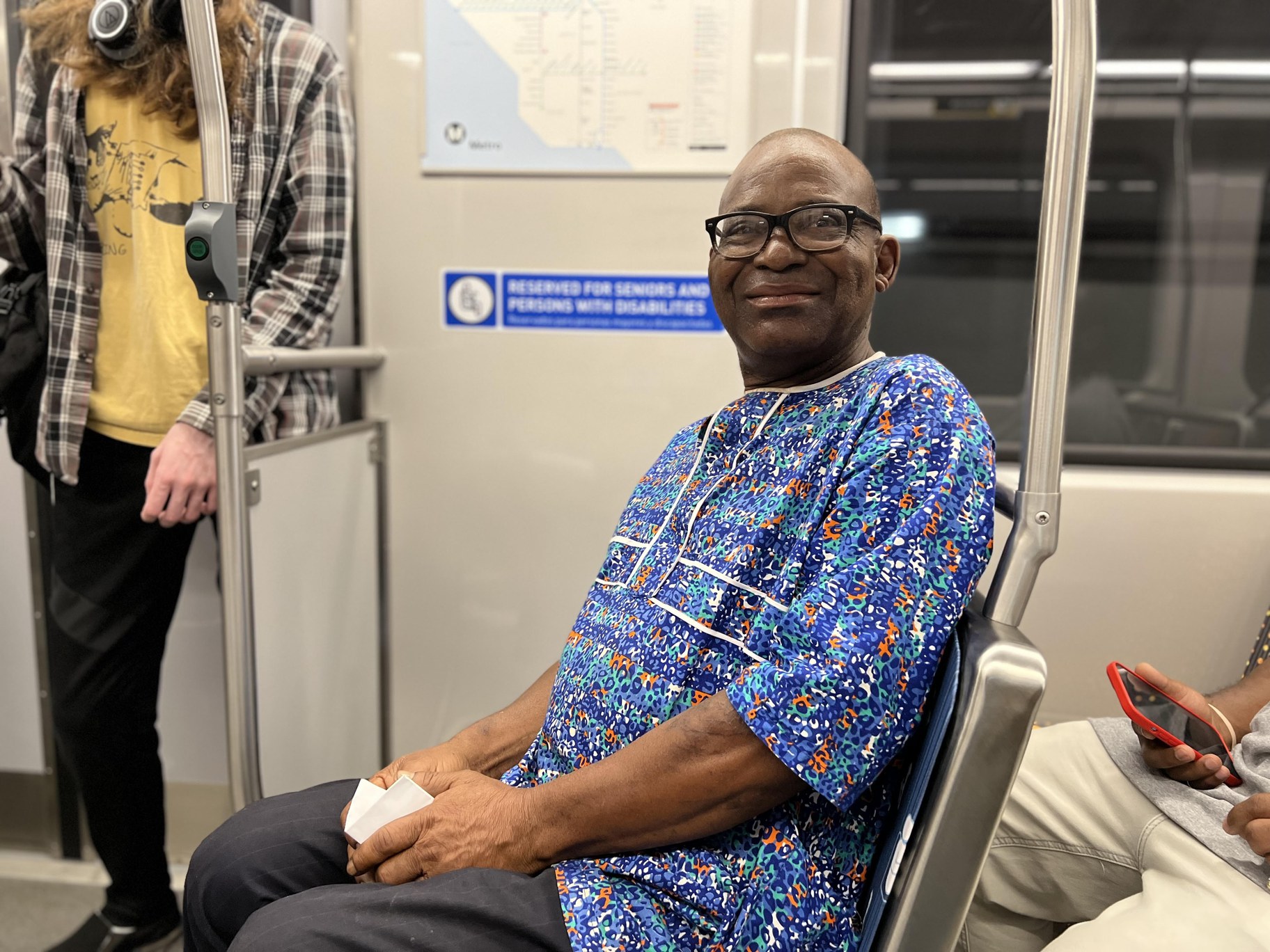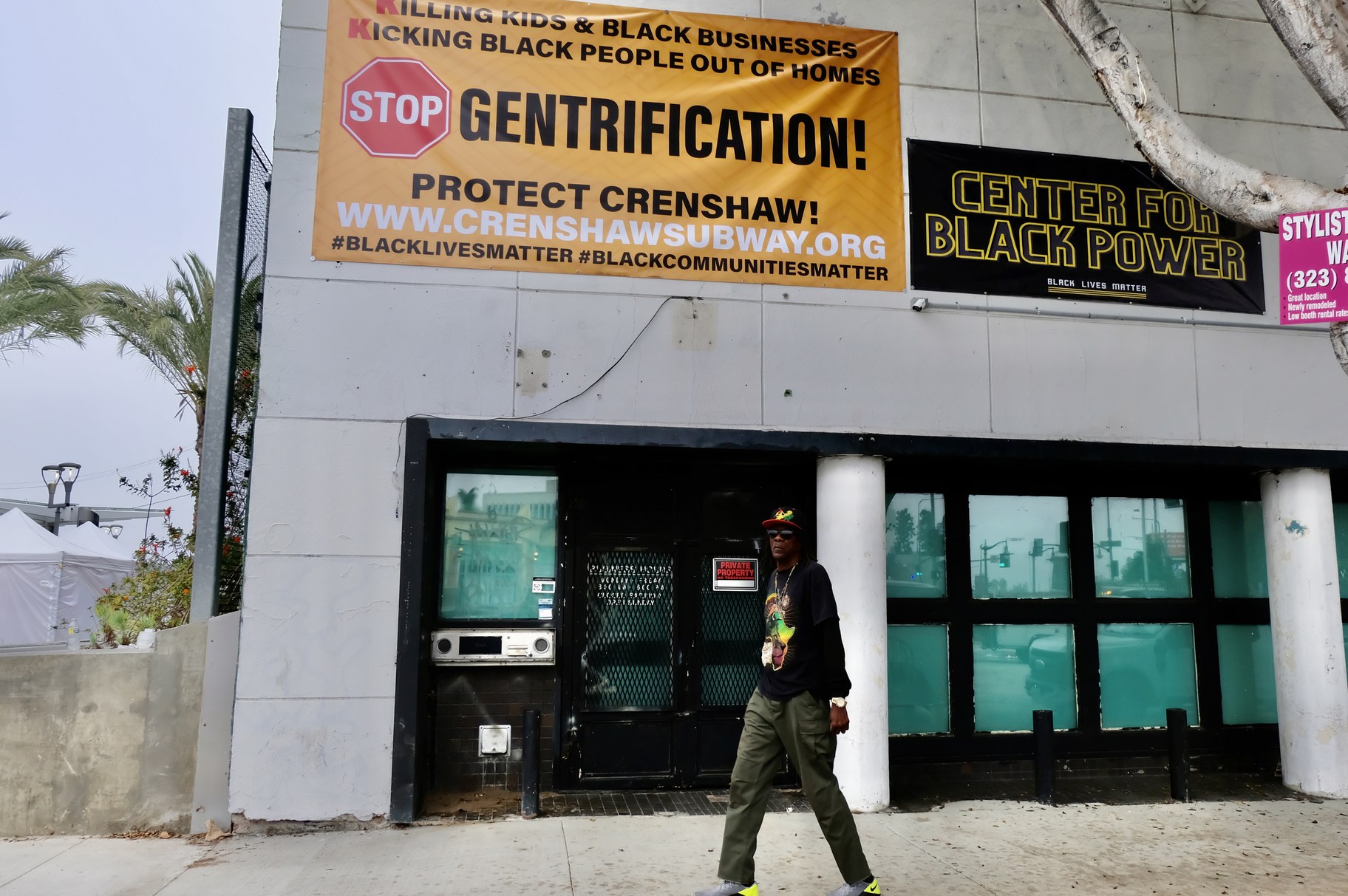When the new K-Line train pulled out of the station at Exposition and Crenshaw boulevards with passengers for the first time, it was running late. Three years late, and $90 million over budget.
But the big crowds who showed up to ride for free as the train made its public debut last weekend were focused not on the past but on a future that, for better or worse, promises to make long-neglected parts of South Los Angeles and Inglewood more accessible than ever.
 Passengers ride a new K-Line train car at the Leimert Park station. Photo by Saul Gonzalez.
Passengers ride a new K-Line train car at the Leimert Park station. Photo by Saul Gonzalez.
Michelle Galarza, 28, a resident of LA’s Hyde Park neighborhood, woke up early to ride the K-Line on its second day of operation. She says she’s often fearful of riding the bus, but hopes the K-Line will have more security and get her to where she has to go faster. “I’ll get [to work] in half the time,” she says. “I’m going to try to get my sister-in-law, we commute together, so I’m going to definitely try and – ‘let’s take this!’”
While Metro, LA County’s transportation agency, is celebrating the $2 billion K-Line’s debut, the train line is not completely finished. Seven of nine total stops are open but the final and potentially most crucial destination for the train is LAX International Airport, a stop Metro officials say they hope will open late in 2024.
Along with serving the commuters of LA County, transportation officials’ goal is to provide rail service from the airport to the most tourism-friendly parts of the city by the time Los Angeles hosts the Summer Olympics in 2028.
 "It is one of the greatest things to happen for South Los Angeles," says Dexter McLendon as he rides the new K-Line train. A longtime resident of South LA, McLendon feels optimistic about what the trian will mean for people's transportation options and new investment in the community. Photo by Saul Gonzalez.
"It is one of the greatest things to happen for South Los Angeles," says Dexter McLendon as he rides the new K-Line train. A longtime resident of South LA, McLendon feels optimistic about what the trian will mean for people's transportation options and new investment in the community. Photo by Saul Gonzalez.
In the meantime, at opening weekend, events business owners and local passengers in Leimert Park and Inglewood expressed both optimism and concerns about the new people, money, and development that might follow the K-Line into their communities. The train runs down Crenshaw Boulevard, through the cultural and demographic heart of Black Los Angeles, and through majority Latino neighborhoods in Inglewood and South LA.
 The owner of the African Marketplace in Leimert Park takes a ride on the K-Line train on opening weekend. “I’ve been here for 35 years, and Leimert Park is known for events,” he says. “It will help people come down here riding the train.” Photo by Saul Gonzalez.
The owner of the African Marketplace in Leimert Park takes a ride on the K-Line train on opening weekend. “I’ve been here for 35 years, and Leimert Park is known for events,” he says. “It will help people come down here riding the train.” Photo by Saul Gonzalez.
The owner of the African Marketplace on 43rd Street in Leimert Park, who goes by one name Obi, said the eight years of construction in front of his store “was worth the wait.” He added, “It took a lot of my business, but when I look back now, I think it’s going to bring me more business.”
 A sign critical of the K-Line's construction on display just steps from a new light rail station in South Los Angeles. The K-Line's construction has raised both hopes and fears about the train's affect on development, property values and rents. Many are asking whether the K-Line will be an engine of gentrification and displacement. Photo by Saul Gonzalez.
A sign critical of the K-Line's construction on display just steps from a new light rail station in South Los Angeles. The K-Line's construction has raised both hopes and fears about the train's affect on development, property values and rents. Many are asking whether the K-Line will be an engine of gentrification and displacement. Photo by Saul Gonzalez.
A local who uses just one name, Kahumba, says he’s lived in and around Leimert Park for 27 years and he agrees that money will follow the train. But, he says, the train is not popular with his neighbors “because they feel like it’s a takeover thing. They feel like the white people are coming down, taking over the neighborhood.” But, he adds, “I’ve been down here over 27 years, and I’ve seen [the neighborhood] deteriorating, it’s getting really bad. The train is going to bring in new people, going to bring in more income to the neighborhood, it’s going to change things for the better, I think. I don’t think it’s going to change it for the worse.”
Looking ahead, Metro’s ambitions call for the K-LIne to extend north of Exposition Boulevard, cross the 10 freeway, and service stations in in West Hollywood and Hollywood. But don’t expect to ride that anytime soon. Metro projects that project wouldn’t be completed until 2047.
See the K-Line route and approximate times for stops here.
